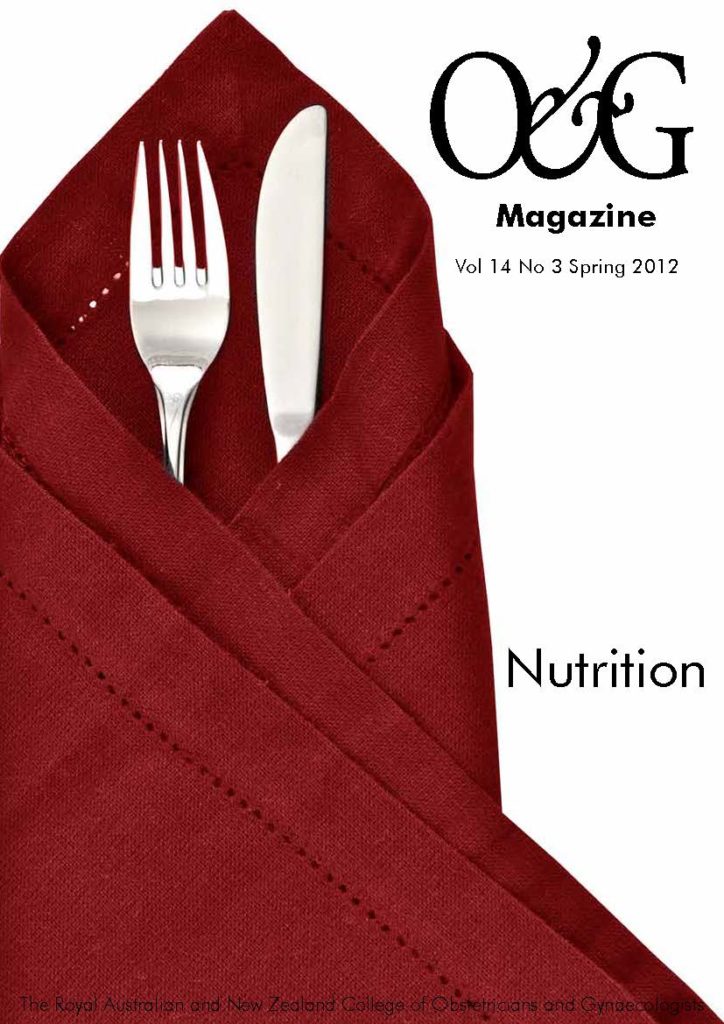Antibiotic prophylaxis for caesarean section: is pre-incision better than post cord clamping?
Rates of caesarean section (CS) are rising in the developed world and Australia is certainly no exception. Rates vary from state to state, but nationally CS now accounts for around 30 per cent of hospital births in Australia.1 While the reasons for these statistics are numerous and much discussed, CS rates are likely to continue at, or above, current levels.
Of significant concern is the five- to 20-fold increased risk of post-operative infection with CS compared to vaginal birth.2 Since its initiation by Burke on animal models in the 1960s, antibiotic prophylaxis for CS has become established practice worldwide, and this has been shown unequivocally to reduce the incidence of post-operative infection.2 However, the timing of prophylactic antibiotics for CS delivery has not yet been standardised across Australian hospitals.
With all surgical procedures there is the potential for post-operative infection. This is particularly the case for CS, due to the direct anatomical connection of the vagina with the operation site, allowing normal vaginal and bowel flora and pathogens to ascend intra- and postoperatively and colonise both the placental site and the wound site.2 The major infective morbidities associated with caesarean delivery are endometritis and surgical site infections (SSI); rates vary, depending on whether the surgery was scheduled or emergency, but there are also disparities in reporting of rates owing to variations in practice of post-discharge surveillance among institutions.2,3,4,5 Both SSI and endometritis are associated with considerable morbidity, longer hospital stays and in some cases re-admission. Reducing such postoperative complications following CS is highly desirable, given that women are coping with both the postoperative period and a new baby.
In all other surgical procedures administration of antibiotics prior to skin incision is standard, to ensure blood levels of antibiotic are optimal at the time of surgery, resulting in less exposure to pathogens.2 Historically, post-cord clamping antibiotic prophylaxis was routine for CS, owing to the perceived risk of fetal exposure that might mask neonatal infections and increase the need for sepsis workup in newborn infants. There was also considered to be the potential for maternal anaphylaxis to the prescribed antibiotic that might compromise the fetus. However, recent overseas studies have established that antibiotic prophylaxis given prior to skin incision has a much lower incidence of SSI following CS, without affecting neonatal outcomes.2,3,4,5
A 2008 retrospective cohort study from the USA showed a significant decrease in post-CS SSI (from 6.4 per cent to 2.5 per cent) when hospital policy for antibiotic prophylaxis was changed from post-cord clamping to pre-incision.6 A large systematic review, published in 2009, reached the same conclusion.7 A meta-analysis published in 2008 included 15 studies (three of which were randomised controlled trials) and evaluated the timing of antibiotic prophylaxis for CS as well as the type of antibiotic used. This study concluded that cephazolin alone before skin incision was associated with a significant reduction in postpartum endometritis and total infectious morbidities, without affecting neonatal outcome.5 Cephazolin was the antibiotic used in the three RCTs; it has a half-life of 1.8 hours, and has been shown to be as effective as cefoxitin, but 80 per cent less expensive.5
Cairns study
As a medical student I took part in a prospective study at Cairns Base Hospital, Queensland, in 2010–11, assessing rates of SSI following CS (emergency and elective). An initial cohort comprised all women (numbering 203) undergoing CS in the hospital over a three-month period in 2010; hospital protocols at the time included prophylactic antibiotics following cord clamping. Rates of SSI post-CS were found to be 10.8 per cent. Subsequently, protocols were changed to 2g cephazolin given 30 minutes before skin incision. An otherwise identical study was then conducted on all women undergoing CS for a three-month period in 2011; the rate of SSI in this cohort of 181 women was 2.8 per cent. Demographic, medical and obstetric characteristics of the two study populations were similar.
We considered a number of other risk factors noted as significant in other studies including emergency rather than elective CS, prolonged duration of the surgery, use of staples rather than sutures, obesity and diabetes, but found no association with increased rates of SSI. It was the change in timing of prophylactic antibiotic that resulted in the most significant improvement in health outcomes for women following CS. Nevertheless, antibiotics are not a substitute for all other factors that aid in reducing infection levels such as: hair clipping opposed to shaving, effective antisepsis of patient and staff, air ventilation, maintenance of sterile surgical fields and post-operative wound care.3
In 2010, following recent study findings, the Society of Obstetricians and Gynaecologists of Canada (SOGC) Infectious Disease Committee made a recommendation that all women undergoing CS should receive a single dose of a first-generation cephalosporin 15–60 minutes before skin incision.3 Other bodies that have adopted this change include the American College of Obstetrics and Gynaecology (ACOG) and the American Academy of Paediatricians. In December 2011, the National Institute for Health and Clinical Excellence (NICE) followed suit with amendments to its guidelines, now recommending administration of antibiotic prior to skin incision.2,8
RANZCOG guidelines
The current RANZCOG statement on antibiotic prophylaxis for caesarean section, C-Gen 17, November 2011, is as follows:
For caesarean section: there is evidence that antibiotics are beneficial for prophylaxis of wound sepsis as well as endometritis for all caesarean sections, elective or non-elective. Use: cephazolin 1g (adult 80kg or more: 2g) IV.
Administration after the cord is clamped has been common practice to avoid exposing the neonate to antibiotics, and to avoid compromise to the fetus in the event of maternal anaphylaxis. These considerations need to be weighed against lower maternal infection rates if prophylaxis is administered before skin incision.
Given the very considerable weight of evidence now in favour of pre-incision antibiotics, the apparent lack of harm to mothers and neonates, and the changes in national guidelines in the UK and North America, it may be appropriate to consider a more decisive recommendation for Australia and New Zealand.
References
- Howell S, Johnston T, Macleod SL. Trends and determinants of caesarean section births in Queensland, 1997-2006. ANZJOG 2009; 49(6): 606-11.
- Lamont RF, Sobel JD, Kusanovic JP, Vaisbuch E et al. Current debate on the use of antibiotic prophylaxis for caesarean section. BJOG 2011; 118: 193-201.
- Van Schalkwyk J Van Eyk N. Antibiotic prophylaxis in obstetric procedures. J Obstet Gynaecol Can 2010; 32(9): 878-92.
- Smaill FM, Gyte GM. Antibiotic prophylaxis versus no prophylaxis for preventing infection after caesarean section. Cochrane Database Syst. Rev 2010; 20(1): CD007482.
- Constantine MM, Rahman M, Ghulmiyah L, Byers BD et al. Timing of peri-operative antibiotics for caesarean delivery: a meta-analysis. Am J Obstet Gynecol 2008; 199: 301- 306.
- Kaimal AJ, Zlatnik MG, Cheng YW et al. Effect of a change in policy regarding the timing of prophylactic antibiotics on the rate of post-cesarean delivery surgical site infection. Am J Obstet Gynecol. 2008; 199(3): 310e1-5.
- Owens SM, Brozanski BS, Meyn LA, Wiesenfeld HC. Antimicrobial prophylaxis for caesarean delivery before skin incision. Obstet Gynecol 2009; 114(3): 573-9.
- National Institute of Health and Clinical Excellence Guidelines [Internet] Caesarean Section. Updated 21 Nov 2011. Available online: http://www.nice.org.uk/cg132 .






Leave a Reply